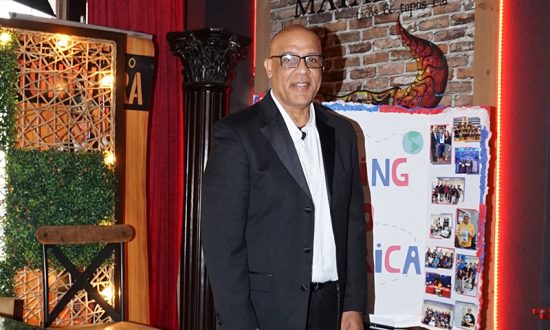As an English as a Second Language (ESL) teacher in New York City, Manuel Hernandez had many recently arrived students from all over the world. Determined to bridge that gap, he discovered culturally responsive teaching. Purpose called him to come to Central Florida and use his teaching experience to facilitate language learning and get young adults (particularly immigrants) college and career ready. After several years in Florida, he has been able to help open the academic doors that were shut for many of the recently arrived students. His Coming to America (CTA) educational program has impacted second language learners in Florida.
Every year less and less students register in college. College enrollment continues to decline at an alarming rate. According to the National Student Clearinghouse Research Center, total college registration in 2019 decreased 1.7% (or about 300,000 students) from the previous spring. For eight years in a row, college enrollment has declined. However, Covid-19 has become one of college enrollment’s greatest antagonist, and it faces its greatest challenge ever. Fostering college enrollment is not only an idea but a must among colleges and universities in the United States.
While the transition to online teaching has become part of college culture, the resistance to the new mode of classroom instruction may come from undergraduate students who started their experience with the expectation of face-to-face instruction but found themselves in front of a computer and at home for their initial experience in college. With the sudden and unexpected shift to online teaching because of Covid-19 from March to May of 2020, the experience of thousands of incoming freshmen students was based on their online classroom experience in high school. The everyday classroom experience took a U-turn and online teaching became an improvised normal for thousands if not millions of students. Fostering college enrollment may take more than just online apps, technological resources, and tools on how to register, access and take online classes.
In Florida alone, there has been a -4% decrease from 2019 to October 2020 (https://nscresearchcenter.org/stay-informed/). The four percent decline can be attributed to colleges going completely online for 2020-2021. Curiously, graduate enrollment has increased, but the increase may be in jeopardy in the future if colleges and universities do not start designing strategies to foster college enrollment among its growing young adult population, especially those who are relocating from outside countries to the Sunshine State (Florida) with very little knowledge of the online classroom experience. The resistance to online teaching comes from those who for too long were accustomed to face-to-face instruction, and a bridge was never built to help them walk across, pay the toll, and make it to the other side.
The resistance can only be met with a clear and focused understanding of a cultural transformation in the making and in progress of what education was, is and will be. The antagonist is not going away that easily, and it will take more than sheer will to engage the thousands of young adults who decided to stay home and wait for face-to-face instruction to come back to the educational arena.
Training teachers in the educational arena may be an unsurmountable task. To add to the task, there is a nationwide shortage of teachers. With major corporations offering high paying jobs to Math, STEM and Science teachers, and retiring Baby Boomers of one of the oldest professions, the crisis has no “light at the end of the tunnel”. With minority populations moving into Central Florida, Texas and other cities at unprecedented rates, the educational system is stagnant in the outbreak of a plague and the increase of English Speakers of Other Languages (ESOL students).
A programmatic approach aligned to a culturally relevant response is an alternative to foster college enrollment. Preparing emerging bilinguals with the college and career readiness skills necessary to achieve their full potential is key in the dynamic and “real time” alternative. First, it is smart to create mentorship opportunities with colleges and empower high school students with college and career readiness skills. Second, it is essential to provide writing workshops for students on how to write, build and publish their stories of pain and relocation and transform them into scholarship essays facilitating their pathway for scholarship, grants, and career readiness at the same time. The learning experience and adjustment to new teaching modes must be more than just giving students laptops, and other technological devices.
Online instruction has been a success but fostering it will require a vision to depict it differently than the classroom experience that hundreds of thousands of high school seniors had right before they graduated from high school. It is up to those who are interested in increasing their numbers to change that lasting impression and recapture the faith in education from students whose high school education ended abruptly and differently than no other experience in history. To equip emerging bilinguals and other students with college and career readiness skills necessary to achieve their full potential, there is a need to bridge the cultural divide by creating opportunities and achieve holistic success in all learners.
Even the greatest architects have had to make deviations from their original blueprint to build bridges. Success is not totally controlled through a document, but it is sustained through constant failure, focused practice, and ever-changing results. Learning and collaboration are the core of what education should be and where it will go in the years to come. Carol Dweck discovered that challenges open the gateways of a growth-mindset; only vulnerability and failure occur because of challenges but with determination may result into major success. With a culturally relevant response, college enrollment will slowly, steadfastly and gradually increase and maintain a steady pace towards excellence.




